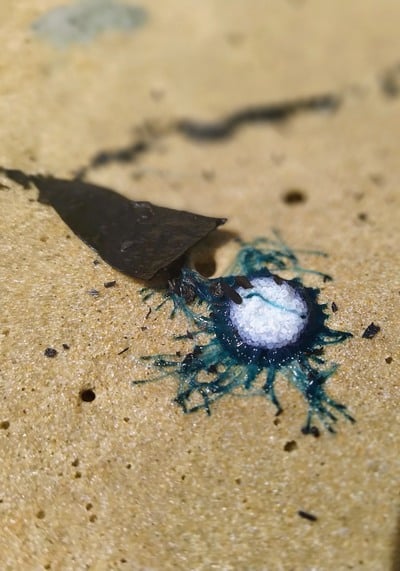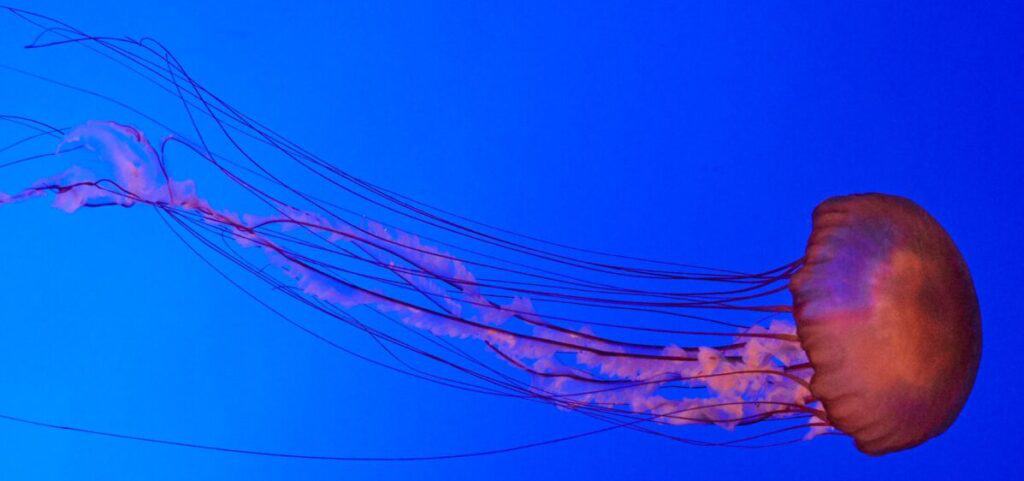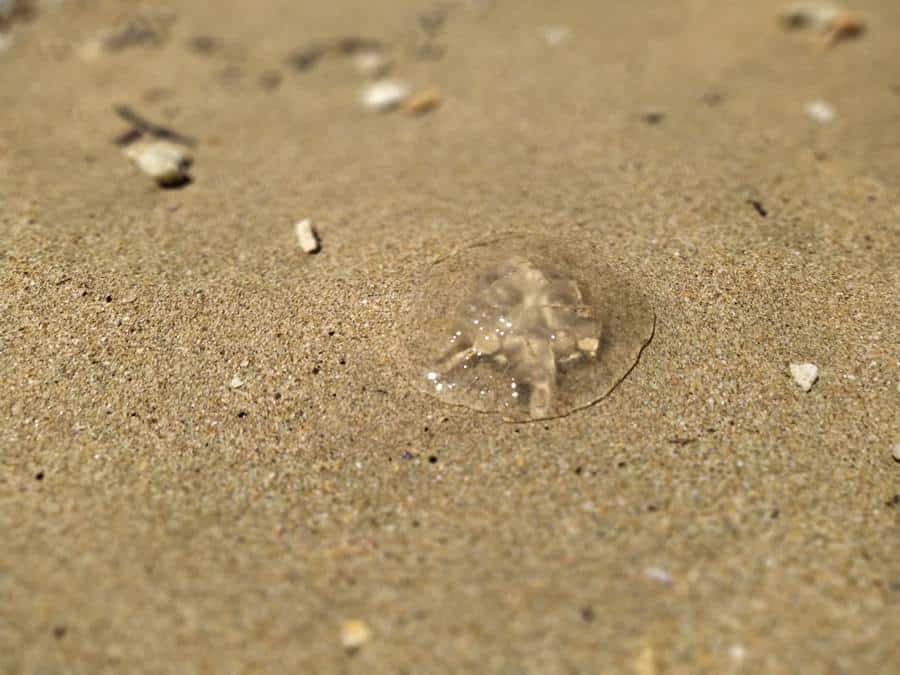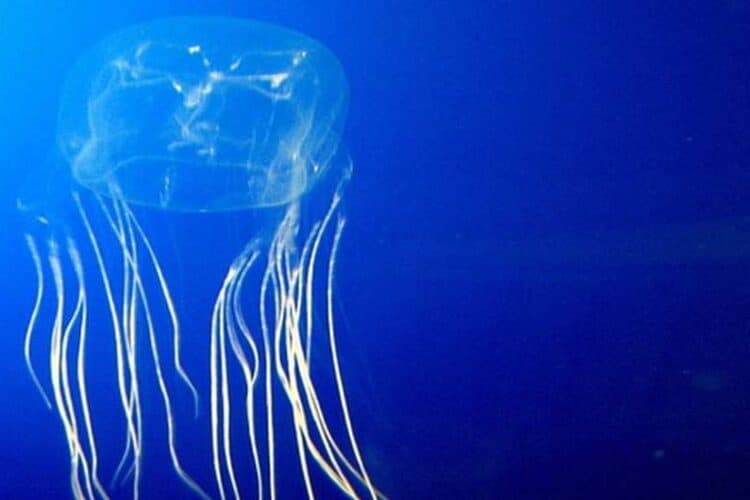The term marine stingers is heard often when talking about beach life in Australia, especially when referring to beach safety and avoiding catching a potentially fatal sting from one of these creatures.
But what exactly are we talking about when we use the term marine stingers? In this article, we are going to take a look at these types of creatures in a little more detail and give you some really useful advice on how to avoid them or what to do if one does catch you.

What Are Marine Stingers?
In simple terms marine stingers are a category of sea creatures that are known to produce a sting, these often include animals more often than not they are jellyfish most notably the box jellyfish, however, there are others such as the stonefish and certain varieties of sea snail.
Essentially any marine creature can deliver a sting, and whilst you may hear horror stories of fatal jellyfish stings to unsuspecting tourists in Australia, the fact is that in the last thirty years, there have only been 80 deaths caused by the box jellyfish.
Taking precautions not to disturb these creatures in their natural habitat is the best approach when swimming in Australian waters. But first, let’s take a look at the most common types of marine stingers
The box jellyfish is one of the most dangerous types of marine stinger which has up to 15 tentacles that deliver a powerful sting. These jellyfish are dangerous due to the fact that they are totally transparent and so much more difficult to see and therefore avoid.
The Irukandji jellyfish
The bluebottle is another type of jellyfish that has a balloon-like appearance and gently bobs in the water but despite its beautiful blue colour, it is not as friendly as it may first seem and can deliver a painful sting, however, it is not life-threatening.
Hair jellyfish is a common marine stinger found in Australian seas, they can be identified by their bell shape and whilst their sting is not fatal, it can be painful and irritating.
The stingray can commonly be found in the water here and when startled they may deliver their venom by way of their tail, these creatures may simply cause a cut right through leaving behind infection in the wound.
The stonefish is well camouflaged in the water making it easy to fall victim by accidentally stepping on them. It has been known for the fish’s spines to penetrate through the sole of a shoe, showing just how easily they can cause damage, but if their venom gets into your body it can be immensely painful and is resistant even to the strongest of pain-relieving drugs.
The cone snail is a very venomous creature that dwells in the seas surrounding Australia, and it can prove fatal, however, this has only ever been noted on one occasion as treatment is more often than not, highly effective.

How To Prevent Marine Stingers
Of course, there is no need to go running out of the water just yet as there are plenty of effective ways in which you can avoid coming into contact with one of the marine stingers lining the ocean. We are now going to look at some helpful tips to keep you safe during your swim.
When taking a swim at the beach, you should never swim at a beach that is not patrolled by lifeguards, they are there for your safety and you should take advantage of this. Always make sure that you stay within the allocated swimming area – between the red and yellow flags.
If there are any safety signs, it is imperative that you read and follow them in order to remain as safe as possible.
If you discover a marine stinger that has washed up on the beach, you should not touch it, just because it is no longer alive doesn’t mean it cannot sting you.
Many beaches will have stinger nets in place, you should keep within these and if you are swimming near the edge of the net, you should ensure that you do not move it and run the risk of a stinger floating over the top of the net.
Avoid swimming in the stinger season which occurs between November and May if you can. If you do need to swim during this time, it is a wise idea to cover up completely when in the water by wearing a full bodysuit.
When entering the water, do so at a slow pace, the marine stingers are not out to get you so by giving them warning of your arrival, they will likely swim away from you.
Never go into the water when the beach is closed, help will not be on hand should you get into trouble.
Don’t be afraid to ask the lifeguards for help and advice, it is better to be armed with knowledge than to not know due to the embarrassment of asking.

What To Do If You Are Stung
If you are unfortunate enough to get stung by one of the marine stingers, there are certain things that you should do. Depending on what has stung you will depend on the treatment that is required, so we will cover both highly toxic stings and those which are not life-threatening.
To determine if a sting may be life-threatening, you can look for symptoms such as breathlessness. nausea, a rash that spreads quickly, dizziness and loss of consciousness, However, if you are not sure what has stung you, it is advisable to follow the toxic sting treatment just to err on the side of caution.

Toxic Jellyfish Stings
- Call 000 as a first port of call, you can then perform first aid whilst you wait for their arrival.
- If the patient is unconscious, CPR is the main priority.
- Pour vinegar onto the site of the sting for at least thirty seconds, this can prevent further venom from being released as well as be an effective form of pain relief.
- It is definitely worth remembering that a sting from an Irukandji can cause Irukandji syndrome which can be fatal if not treated, however, this condition is known to take between 30-40 minutes to show and so many jellyfish stings should be dealt with immediately to avoid further complications.
Non-toxic Stings
- For stings that are not considered to be fatal such as one from a hair jellyfish, you will still need to treat the area to relieve pain.
- Treatment begins with the use of vinegar to cleanse the area and stop any further (mild) toxins from being released.
- If there are any tentacles present, these should be removed whilst still dousing in vinegar. Make sure that you wear some sort of protection whilst doing this as the tentacles can still deliver a sting even after being removed from the jellyfish.
- Thoroughly wash the area with hot water, the water should be as hot as the patient can take for the most effective results, without causing burns. If no hot water is available, the next best thing is ice which can also be used to treat the pain.
- The pain from a minor sting may last for quite some time so painkillers and topical treatments can be used for some relief during the healing process.
Conclusion
There are a lot of marine stingers in Australian waters, but we should not be fearful of entering the sea because of them. Provided that we follow the safety warnings and swim in designated areas, the chance of being stung is quite low.
However, if you do get caught, quick action and the correct treatment can minimise the risk of a sting becoming a fatality.
Resource Links To Products We Use And Recommend
More Pages On Fraser Island
Avoid The Starlit Trails: Why Not To Drive On Fraser Island At Night
Fraser Island, located off the coast of Queensland, Australia, is a popular tourist destination and a UNESCO World Heritage Site. The island, which spans more than 120 kilometres in length and 24...
Fraser Island, which is a popular tourist destination in Australia. The island has a number of campsites and other facilities where visitors can use toilet facilities. There are on average around 22...


